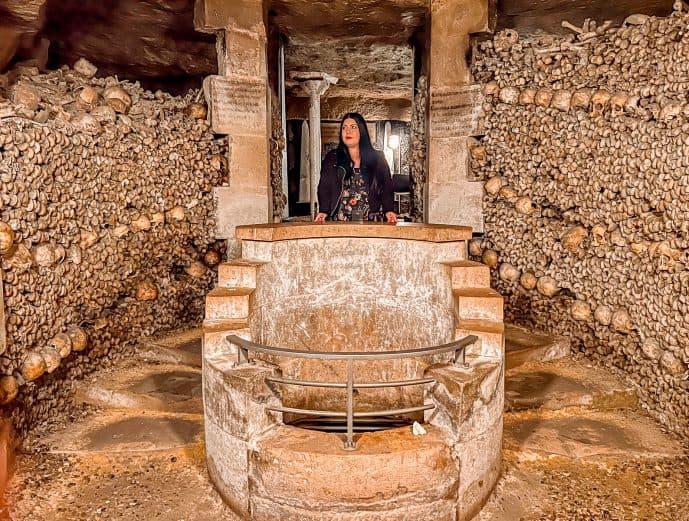Beneath the bustling streets of Paris lies a somber labyrinth steeped in history and mystery: the Paris Catacombs. This vast underground ossuary, housing the remains of over six million people, offers a bone-chilling glimpse into the capital’s past. France 24 explores the eerie corridors and untold stories lurking in these shadowy tunnels, revealing how this macabre monument has evolved from a practical solution to overflowing cemeteries into a haunting symbol of the city’s complex relationship with death.
The Dark History Beneath Paris Streets Explored
The labyrinthine tunnels beneath Paris hold more than just shadows; they conceal a macabre tapestry of history dating back to the late 18th century. Originally limestone quarries, these underground passageways were transformed into ossuaries to address the city’s overflowing cemeteries, which posed severe public health risks. Over the course of several years, the bones of more than six million Parisians were relocated here, creating eerie walls of skulls and femurs that stretch endlessly. What began as a practical solution has since morphed into one of the most haunting and fascinating cultural landmarks in the world.
- Purpose: From mass grave closures to underground cemeteries.
- Timeframe: Ossuary creation spanning from 1786 to early 19th century.
- Scale: Over 200 miles of tunnels beneath Paris.
- Visitors: Today, only a fraction is accessible to the public.
Despite its grim origins, the catacombs have become a symbol of Paris’s layered history and resilience. The site has witnessed both reverence and rebellion, serving as a hideout during World War II and inspiring countless tales of mystery and the supernatural. Modern-day explorations have unveiled graffiti dating back centuries, secret chambers, and the ever-present aura of death mingled with the rich texture of human stories etched in every stone.
| Aspect | Details |
|---|---|
| Number of Bones | ~6 million |
| Tunnel Length | 200+ miles |
| Official Public Access | 1.5 km |
| First Ossuary Opening | 1786 |
Unveiling the Secrets of the Catacombs Architecture and Human Remains
The maze-like corridors of the Paris Catacombs stretch over 200 kilometers beneath the city, a sprawling underground necropolis that defies the urban landscape above. Originally limestone quarries dating back to Roman times, the tunnels were later repurposed in the late 18th century to address the city’s overflowing cemeteries. The architecture is a haunting blend of utilitarian quarry work and macabre artistry, with meticulously stacked human bones forming walls, pillars, and decorative arrangements that serve both structural and symbolic purposes. Visitors navigate narrow passageways punctuated by carved inscriptions and solemn epitaphs, underscoring a chilling reverence for the dead.
Inside this subterranean ossuary, the skeletal remains of approximately six million Parisians lie in silent testament to centuries of urban history and mortality. The bones are not randomly dumped but organized in distinct zones by century and origin, reflecting a methodical cataloging akin to an underground archive. Among the curiosities are:
- Crib-like stacks of femurs supporting skull arrangements known as “chapels of bones.”
- Carved stone markers identifying sections relocated from specific Paris cemeteries.
- Remnants of the quarrymen’s households embedded in the walls, including rusted tools and inscribed messages.
| Section | Bones Count (approx.) | Origin Cemetery | ||
|---|---|---|---|---|
| Les Innocents | 1,000,000+ | Medieval Cemetery | ||
| Saint-Eustache |
| Section |
Bones Count (approx.) |
Origin Cemetery |
|
| Les Innocents | 1,000,000+ | Medieval Cemetery | ||
| Saint-Eustache | 500,000+ | 17th Century Church Cemetery | ||
| Saint-Étienne | 400,000+ | 18th Century Parish Grounds | ||
| Other Sections | 4,100,000+ | Various Smaller Cemeteries |
If you’d like, I can also help with adding captions, enhancing styling, or integrating this content into a larger article. Just ask!
Visiting the Catacombs Safely Essential Tips and Expert Recommendations
Exploring the Paris Catacombs requires more than just curiosity-it demands careful preparation to navigate the dark, narrow tunnels safely. Visitors should always wear sturdy, closed-toe shoes to avoid slips on uneven or damp surfaces, and bring a reliable flashlight or headlamp, as lighting is dim and sporadic throughout the labyrinth. It’s crucial to stay on designated paths to prevent getting lost, as the catacombs cover over 200 miles of underground passageways. Additionally, those with respiratory issues should reconsider, as the air can be stale and sometimes humid deep within the ossuary.
Essential reminders for a secure visit:
- Purchase tickets in advance to avoid long queues
- Follow all posted safety signs and the guide’s instructions
- Avoid carrying large bags which might hinder movement
- Respect the site’s solemn nature and do not disturb the remains
- Hydrate before entering, but refrain from drinking inside
| Item | Why It’s Important |
|---|---|
| Sturdy Shoes | Prevent slips on damp or uneven floors |
| Flashlight | Illuminate dark areas, ensuring safe passage |
| Advance Tickets | Skip lines and secure your entry slot |
| Minimal Luggage | Ease movement through narrow tunnels |
Closing Remarks
As visitors continue to be drawn to the enigmatic depths of the Paris Catacombs, the bone-chilling tales etched into its narrow tunnels serve as a stark reminder of the city’s complex history. Beyond its eerie atmosphere and macabre displays, the catacombs stand as a testament to human resilience and the ways in which the past can linger beneath the surface. For those willing to venture underground, the story of the Paris Catacombs remains as haunting as ever-a silent chronicle of life, death, and the shadows that connect them.




